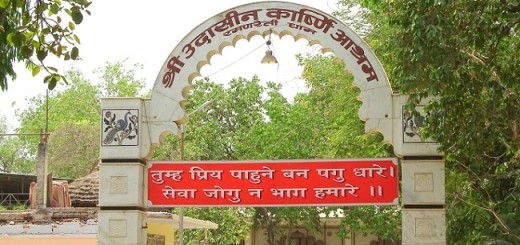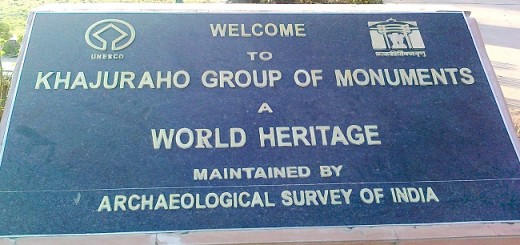How To Explore Kaziranga National Park: A Detailed Travelogue
In my last article, I shared my Ride to Kaziranga National Park from Guwahati. In that article, I narrated my ride to Kaziranga and how I explored the National Park. I stayed in Kaziranga National Park for two days and in those two days, explored the national park in the best possible way. My visit included the Western and the Central Range of the park, and I explored Kaziranga on both jeep and elephant safari. Since Kaziranga National Park is one of the most visited tourist destinations in Assam as well as in North-East India, I decided to write a blog focusing only on Kaziranga National Park. While my previous article dealt mostly with my ride, I decided to write this article for the audience planning to visit the Kaziranga National Park. Therefore, in this article, I will be sharing every possible information related to the Kaziranga National Park. Information like how to reach Kaziranga National Park, Zones in Kaziranga National Park, and How to explore the Kaziranga National Park. I will also share the information related to accommodation facilities at Kaziranga National Park, basic amenities, Safari timings & cost, and other valuable information. I hope this article would be beneficial for a memorable trip to Kaziranga National Park.
Qucik Navigate:
Where Is Kaziranga National Park Situated In India
The Kaziranga National Park lies in the Indian state of Assam. Assam is one of the north-east states of India, and the park lies around 200 Kilometers from state capital Guwahati. The park spreads into three districts of Assam, namely Golaghat, Karbi Anglong, and Nagaon, covering an area of 430 sq km. The Kaziranga Animal Corridor runs from Kaliabor in Nagaon district to Bokakhat in Golaghat district. The animal corridor is also known as the State Highway 1 or AH1, and the national park spreads on both sides of this highway. In general, the Kaziranga National Park lies in the center of Assam and at the heart of North-East India.
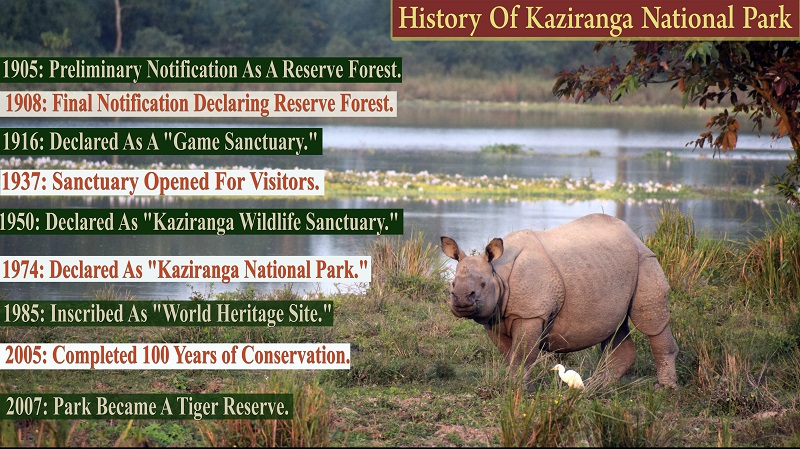
How To Reach Kaziranga National Park
As mentioned, the park lies at the center of North-East India, and it is easily accessible via all the general means of transport. One can reach Kaziranga via the following ways:
ByAir: The nearest airports are Guwahati and Jorhat. While the Jorhat airport is around 100 kilometers from Kaziranga, the Guwahati airport lies about 250 kilometers from the entrance gate of the park.
By Rail: The two big railway station to reach Kaziranga National Park are Guwahati and Jorhat. In case you want to reach Kaziranga via railways, then there are a few smaller railway station, but it would be hard to get trains stopping on those stations at regular intervals. The smaller railway stations are Chaparmukh, Hojai, Lanka, but it is recommended to deboard at Guwahati or Jorhat and travel by road.
By Road: The Kaziranga National Park is easily accessible via road, and the entrance gate of the national park lies on the State Highway, also known as AH1. Regular bus services are available from Guwahati and other big cities of Assam. Not only the bus but the private vehicle also ply on this route, thereby making Kaziranga easily accessible.
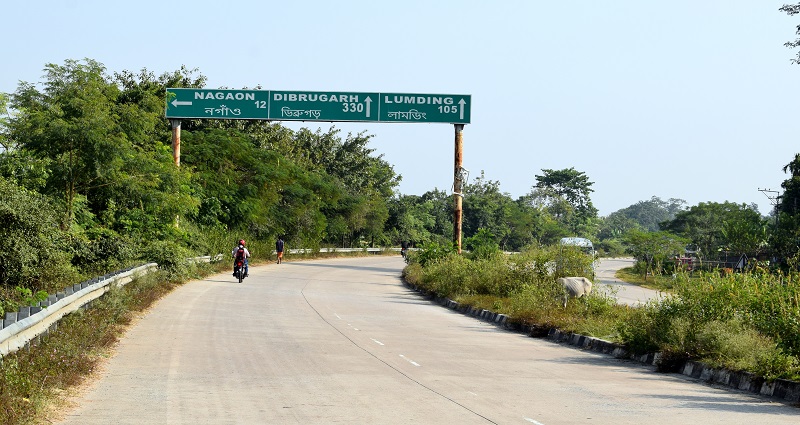
One thing to note is that while searching Kaziranga National Park, it is advisable to search Kohora instead of Kaziranga. The reason is that if we search by Kaziranga, the google map suggests the entrance gate of Kaziranga, which is 170 kilometers from Guwahati. In reality, tourists have to reach Kohora, which is the central range of Kaziranga. Travelers need to arrive at Kohora for ticket bookings and accommodation.
Why Is Kaziranga National Park Famous?
The main attraction of the Kaziranga National Park is the one-horned rhinoceroses, and the park hosts two-thirds of the world’s population of one-horned rhinoceroses. According to the latest census, the park has 2,413 rhinos, which comprises 1,641 adult rhinos (642 males, 793 females, 206 unsexed), and 387 sub-adults (116 males, 149 females, 122 unsexed) and 385 calves. Another attraction of Kaziranga is the Royal Bengal Tigers, and the park has the highest density of tigers in the world. Apart from rhinos and tigers, the park is home to elephants, wild water buffalo, and swamp deer. The Eastern Range of Kaziranga is famous for a large-scale variety of migratory birds. The Brahmaputra basin and the numerous lakes within the park are home to different species of reptiles, amphibians, and fish. Kaziranga is made up of grassland, wetlands, and woodlands and supports a wide variety of flora and fauna. Being situated in the flood plains of might Brahmapurts river, the river plays a vital role in maintaining the high animal density. Some facts about Kaziranga National Park are:
- The highest population of Great Indian one-horned Rhinoceros & wild buffalos in the world.
- The highest ecological density of Royal Bengal Tigers in the world.
- A significant population of the Asian elephant.
- The single largest population of eastern swamp deer in the world.
- Larget undisturbed, representation of Brahmaputra flood plain and grasses.
- An important bird area of India with more than 480 species of birds, including 25 globally threatened species.
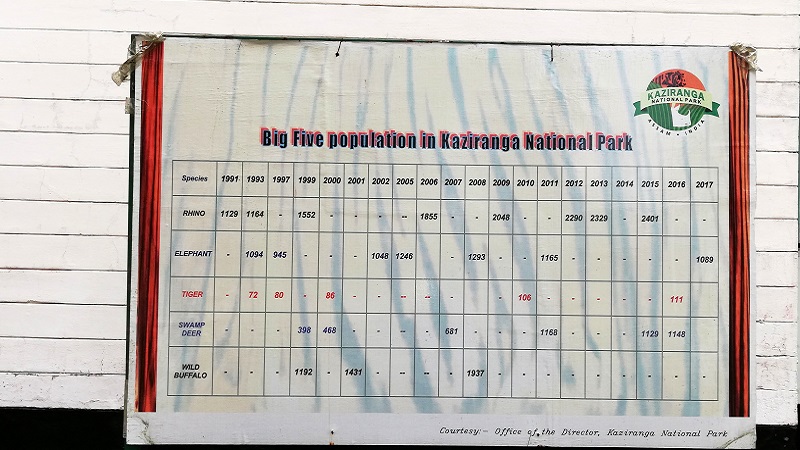
Range or Zones In Kaziranga National Park
The Kaziranga National Park can be divided into five ranges as per the area it covers and animal species available in the zone. Each range has its own characteristics and hosts different types of animal and bird species.
The range of Kaziranga National Park are:
- Northern Range
- Burapahar Range
- Bagori Range (Western Range)
- Kohora Range (Central Range)
- Agoratoli Range (Eastern Range)
Detailed information on each range is as follow:
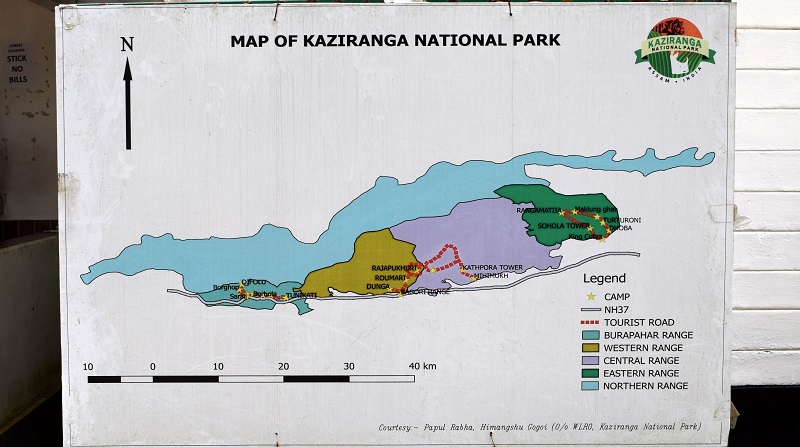
The Northern Range
The Brahmaputra River forms the northern boundary of Kaziranga, and the north range mostly comprises of Brahmaputra river and its flood plains. The important point in the Northern Range is the Biswanath Ghat or Biswanath Port, and it is famous for to and from boat service to the national park.
The Burapahar Range
The Burapahar Range is the westernmost extension of the park. The range is famous for Hollock Gibbons, Hornbill, Rhino, Elephants, Swamp deer, and many species of birds. As per the park authorities, tiger sightseeing is rare in this zone, but rest animals are frequently seen. Important points in this range are Patahi Beel, Burapahar Range office, Janta Beel, and Beat Office. Ghorakati is the entrance gate of the Burapahar Range, and point for documents verification and other formalities.
The Western Range or The Bagori Range
The western range is the most visited range in Kaziranga and famous for Rhino sightseeing. The range not only renowned for Rhino but also for elephants and deer. The western range comprises of two big lakes which are Borbeel and Donga Beel, and many smaller ones. Therefore, the range is an ideal place for different species of fishes. The range is also famous for bird watching, and the probability of birds sightseeing can’t be ruled out. Important points in the Bagori range are Daflang, Borbeel, Donga Beel, Bagori Range office, Rowmari Camp, and Rowmari Beel. Bagori Gate in the Western Range is the entrance to the western zone and point for document verification and other formalities.
The Central Range or The Kohora Range
The Central Range is the most commercialized, as well as the largest range in Kaziranga National Park. Apart from Rhinos, the range is renowned for Tiger, Bear, Wild Boar, and migratory birds. Like the western range, the central range also comprises of a few lakes, and therefore, species of turtles can be seen here. Important points in the central range are Mona Beel, Karsing Beel, Kathpora Wetlands, Kathpora Tower, Daflang tower, and Kohora Range Office. Mihimukh is the main gate of Central Range from where the jeep safari stars. The Kohora range has the best food and lodging options available in the entire Kaziranga.
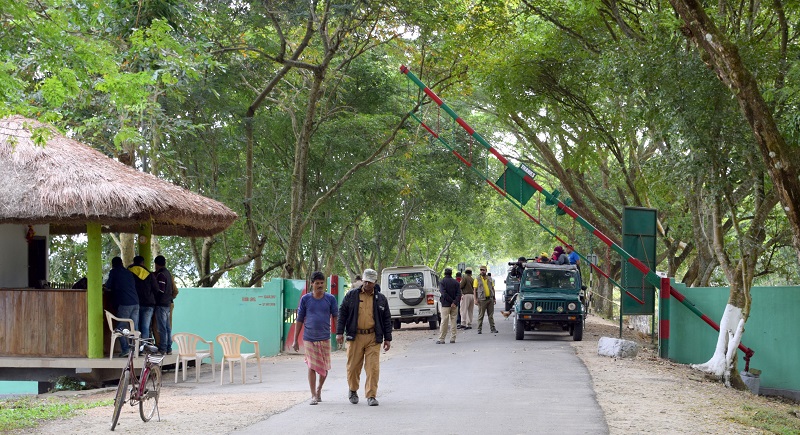
The Eastern Range or the Agoratoli Range
The Agoratoli range is the easternmost range of Kaziranga and famous for different species of migratory birds. Birds species like Bar-headed Geese, Graylag Geese, Northern Pintail, and Mallard are spotted here. Not only birds, but the range is also famous for several species of mammals and reptiles. Ganges River Dolphin is another major attraction of the eastern range. The important points in Agoratoli Range are Siga Tongi, Sohola Beel, Rongamotia Beel, Brahmaputra View Point, Dobha Camp, King Kobra Camp, and Agoratoli Range Office. Agaratoli Gate is the main entrance gate of the eastern range and point for document verification.
Accommodation At Kaziranga National Park
Since Kaziranga is one of the most visited tourist destinations in Assam and North-East India, accommodation is readily available here. The best hotels, homestays, and dorms are available near Kohora or the Central Range of Kaziranga. Although one can find hotels and homestays 10 kilometers from both sides of Kohora, the best hotels are near Kohora. When I reached Kohora, I was able to get accommodation in 10 minutes. There is no need for pre-booking, especially if you are traveling alone or in a small group. In case you are going in a big group or with females, its good to do a pre-booking. Depending upon the budget and number of people traveling, one can get accommodation in 10-15 minutes. Kaziranga has hotels starting from thousand rupees to a few hundred, and depending upon need; one can stay there. Since I was traveling solo and on a fixed budget, I went for a dorm and booked a bed for just 100 rupees.
How To Explore The Kaziranga National Park
Visiting Kaziranga requires a good plan as one is skeptical about which range they should visit to see the most animals. I faced the same problem, and that is the reason I came up with this article. As described, the park is divided into five primary zones, and each zone has its attraction. Most of the tourists visiting Kaziranga confine themselves to the Western and Central Range and never explore other ranges. During my visit, I did the same and toured the eastern and central range but later revisited the Eastern Range while returning from Sivasagar to Guwahati at the end of my trip. The only range I missed while exploring the Kaziranga was the Burapahar Range. On day one, I attended the afternoon Jeep Safari in the Western Range. On day two, I did the morning elephant safari at Western Range and evening Jeep safari in the central range. While returning from Sivasagar to Guwahati, I explored the eastern range of Kaziranga. I was satisfied with the way I traveled the Kaziranga as I gave sufficient time to the National Park. Before planning, it is necessary to allocate adequate days for the park. A minimum of two days is mandatory if you are a wildlife lover. If you want to cover the park extensively, then three or more days are sufficient. The detailed itinerary can be as follow:
Day One: Reach Kaziranga by afternoon and go to the safari counter and book tickets for the evening Jeep Safari for Burapahar Range and at the same time, get the tickets for Morning Elephant Safari at the western range. Also, do the registration for the evening jeep safari at the central range. It is good to make the booking of all the ranges the day you arrive as it will ensure that you get the seats, especially in the central range.
Day Two: Start the day with early morning Elephant safari in the western range. In the afternoon, go for the Jeep safari at the Central Ranges.
Day Three: Start early morning for the eastern range for bird watching. Since bird-watching requires a lot of patience, it will take more time as compared to Jeep and elephant safari if you have extra days than plan a Jeep safari in the evening at the western range. Depending on the time you spend in the Eastern Range, you can leave Kaziranga on day three of day four.
If you are running short on time, then visiting the western range is the best option. Try exploring the Western Range both by jeep (evening) and elephant safari(morning), and you will get a glimpse of the diversity of Kaziranga National Park.
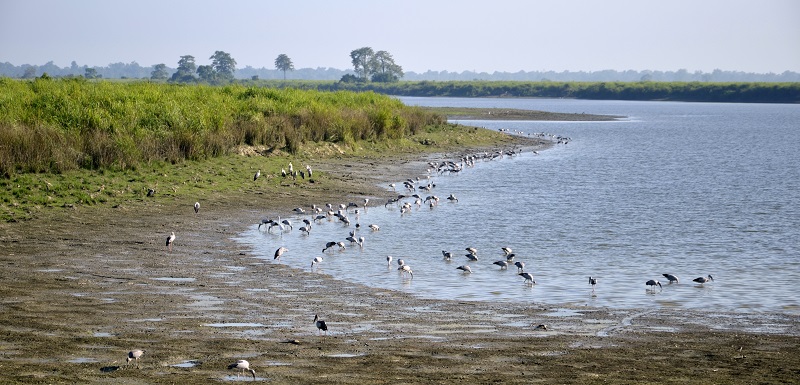
Best Time to Visit The Kaziranga National Park
Before visiting Kaziranga, it is necessary to know when the park is open to visitors. The year-long calendar of Kaziranga National Park is as follow:
Summer Season (March & April)
During this time, the region remains hot and humid with less vegetation due to the Autumn season. This is the best time to spot animals nearby the water bodies. The probability of tiger sightseeing in early morning and evening can’t be ruled out.
Monsoon Season (May to October)
The park remains closed for visitors during monsoon, and animals are left for breeding. Moreover, this time of the year, whole India receives heavy rainfall, including the north-east region. The Brahmaputra river flows above the danger mark; therefore, it is not advisable to visit the park during this time.
Winter Season (November to February)
The winter season is perhaps the best time to visit the Kaziranga National Park. During winter months, the temperature is moderate, and animals come out for grazing and hunting. This time is also best for birds watching as many migratory birds visit the eastern zone.
Safari Timing At Kaziranga National Park:
The Assam Tourism Department organizes Jeep and Elephant safari for the easy exploration of the national park and animal sightseeing. The safari timings are divided into morning and afternoon, which are as follow:
Jeep Safari Timings at Kaziranga National Park
Morning Jeep Safari: 8:00 AM to 10:00 AM
Afternoon Jeep Safari: 02:00 PM to 04:00 PM
Elephant Safari Timing At Kaziranga National Park
Morning- 05:30 / 06:30
Morning- 06:30 / 07:30
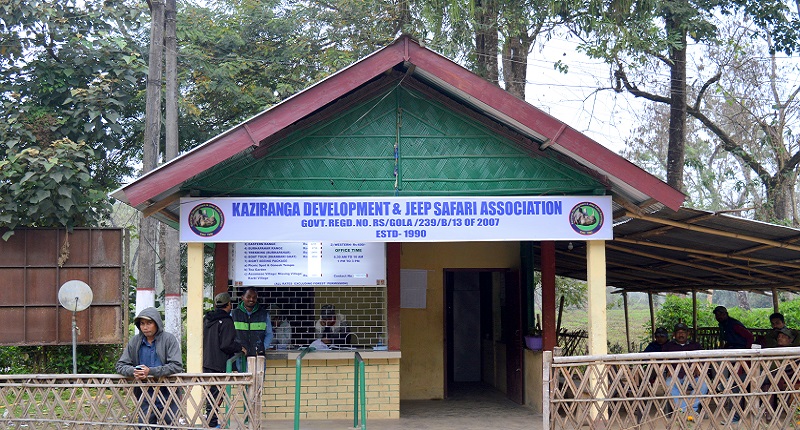
How to Book Elephant & Jeep Safari At Kaziranga National Park
There are two ways to book the jeep and elephant safari at Kaziranga. One can book the tickets directly from the main office at Kohora. Alternatively, tourists can ask the hotel in which they are staying to book the ticket on their behalf. When I was in Kaziranga, I used both methods where I booked the jeep safari at the counter and requested my homestay owner to book the tickets of elephant safari on my behalf. One thing to remember is that if you are traveling alone, then it is better to book the jeep safari directly at the counter. It allows to split the fare with other travelers else booking a safari for a single person would be expensive.
Cost of Jeep and Elephant Safari At Kaziranga National Park
The price of booking elephant and jeep safari at Kaziranga differs for Indian and foreign nationals. The jeep is booked as a whole while it is an individual ticket in case of an elephant. Moreover, the additional cost is added in terms of guard fees, entry fees, tolls, and camera fees. If we speak in terms of individual, the price varies (Indian citizen) between 800 to 1500 per head for the jeep safari and 1000 per head for Elephant safari. The complete break down of the fees in Kaziranga National Park is as follows:
Park Entry Fees
The park entry fees is 100 rupees for Indian citizens and 650 rupees for foreign nationals.
Jeep Safari Cost
The Jeep cost varies from range to range depending upon the distance. The fee for Central Range is INR 1750, for Western Range, it is INR 1850, For Eastern Range, the fare is INR 2250, and for Burapahar Range, the cost is INR 2750. The fees mentioned here are for the only jeep, and charges for entry and toll are separate. A single-vehicle accommodates a maximum of six people.
Elephant Safari Price
The elephant safari at Kaziranga cost around 900 rupees for Indian citizens and 2000 for foreigners. The elephant safari is available at the main gate of each range, and therefore tourists have to reach there by themselves. The duration of elephant safari is one hour and mostly operated in the morning.
Toll Price
An additional 300 rupees for the toll for safaris in Kaziranga. This amount is paid for the maintenance of the safari track and charged per vehicle basis.
Camera Charges
This is an additional fee for carrying a camera in the park. One hundred rupees for still camera and INR 250 for video cameras. For professional videography, separate charges and permissions have to be taken.
Guard Fees
A separate fee of INR 25 for guards per vehicle basis.
While there are so many additional charges in the case of Jeep Safari, the same is not applicable for Elephant Safari. The final cost for Jeep Safari in Kaziranga is around 3000 to 4000, depending on the range. The jeep safari allows a maximum of six-person while it is four people per elephant. Therefore the final price per head varies between 800 to 1400 rupees for Indian citizens for jeep safari. For foreigners, the same may range between 1500 to 2000 rupees. Since I was also traveling alone, I joined a group of 3 travelers and split my fare with them. It is always advisable to share the cost by finding a few more travelers near the booking counter.
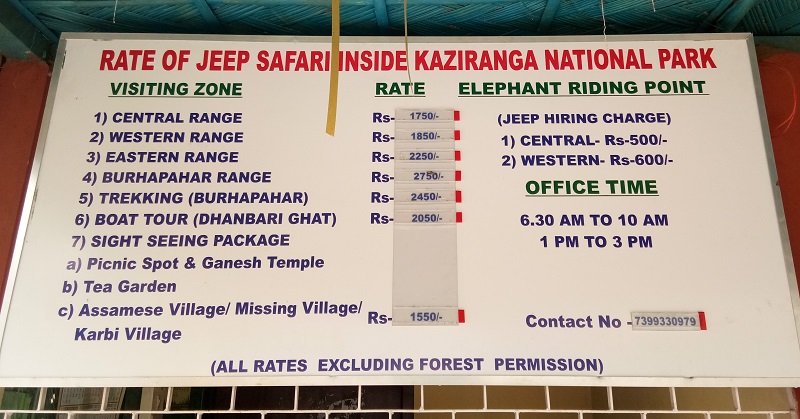
Other Attractions Around Kaziranga National Park
Although the park itself is a big tourist attraction, apart from Kaziranga, there are many more beautiful sites near Kaziranga. Kaziranga lies in the vicinity of the hills of Assam, and there are many beautiful trekking sites for nature lovers. Not only the natural beauty, but the area is also famous for many historical sites that are easily accessible from Kaziranga. Few places travelers can visit while in the Kaziranga National Park are:
Kaziranga National Orchid and Biodiversity Park
The park lies near to the Tourist Information Center in Kohora and a popular place for seeing different types of plants and flowers found in Assam. The park has shops selling handicraft items made up of wood and bamboo.
Assam Team Gardens
The entire north-east is famous for its tea and tea gardens, but the majority of tea estates lie in Assam. Assam alone produces more than half of India’s tea production. Throughout the Kaziranga Animal Corridor, you will find tea estates spread across both sides of the road. There are many tea estates in the state, and the tea estates of Jorhat are most famous among all. Visiting tea estates can be an informational tour where one can learn about from the origin of tea estates in Assam to their current production.
Dhanbari Ghat Boat Tour
A boating tour on the Dhanbari Ghat in the eastern range is another must to do the thing if you have extra days. Unlike jeep and elephant safari, the boat safari doesn’t have fixed timings and can be booked depending upon availability. Not many people venture for the boat ride, but if you go for the boat safari, there is a high probability of seeing the Gaganes River Dolphin. More info is available at the tourist information center in Kohora. Another favorite spot for watching the river dolphin is at the Koliabhumura Bridge in Tezpur.
Trekking in the Burhapahar Range
If you are a trek lover and want to witness the beauty of Kaziranga while walking, this is probably the best option. The Tourism department organizes trek in the Burhapahar Range, and tourists can book slots at the Kohoara Information center.
Kaipholangso Waterfall
A beautiful waterfall situated 30 kilometers from Kohora and ten kilometers from Bokaghat. A one hour ride will take you to this beautiful waterfall.
Butterfly Valley Near Kaziranga
A garden famous for different varieties of butterflies. Various types of flowers are planted here to attract butterflies. The park lies near the eastern range of Kaziranga.
Deopahar Archaeological Site
The Deopahar Site also lies near the eastern range of Kaziranga, and the site hosts sculptures dating from the period somewhere between 7th and 9th century AD. The Deopahar temple dedicated to Lord Shiva is an important temple situated here. The word Deopahar means the “The Hill of The God” and an important site to visit while visiting Kaziranga National Park.
I hope this article helps travelers planning to visit Kaziranga National Park. I tried my best to explain every necessary thing to explore Kaziranga in the best possible way. In case you need additional information or details, kindly let me know via the comments or drop me a message and I would try my best to help you out.


